B2B INQUIRY
How to Recycle
Phones, Accessories, and Batteries
Motorola Mobility operates take back programs in partnership with carriers, customers, retailers and recyclers. Choose from the menu to learn how you can recycle in your location.
Our Commitment to Recycling
We seek to design our products to be easily recycled. Many used phones are still in good condition and can be refurbished. Those that cannot be reused can be recycled, which reduces waste and the use of raw materials to make new phones. Our mobile phones meet or exceed the European Union’s Waste Electrical and Electronic Equipment (WEEE) directive recyclability target of 65 percent.
By law, we are required to take back and recycle our products in 30 countries in the European Union and the European Economic Area, but our commitment goes beyond legislation and has worldwide reach. We offer programs for mobile phones in approximately 60 countries. Our take back programs accept any mobile phone or accessory (not only our products). Some phones are refurbished for reuse and then sent to developing countries where they are sold at a low price, helping to boost access to communications.
Encouraging Handset Returns
The success of our mobile phone reuse and recycling program hinges on consumer participation. For this reason, we work to increase the number of people who recycle their mobile phones and accessories by:
- Providing prepaid postage labels on our website for some markets. Refer to recycling pages for specific markets: Americas, Europe, Asia Pacific
- Holding electronics collection events at our facilities for employees and local communities
- Offering periodic incentives such as product discounts
- Participating with governments and other companies in take back events and promotions
- Placing collection containers in our service centers
- Partnering with industry and communities in programs such as RGLA in the United States, EPRA in Canada, and Mobile Muster in Australia, as well as Call to Recycle for Batteries.
We feature a crossed-out wheeled bin symbol on our products and documentation. This symbol informs users that a product must not be disposed of in household waste, but instead recycled in accordance with the European Union WEEE Directive and other national legislation.
Motorola Mobility Supports the Following Goals:
- Promotes product take back programs for mobile phones, batteries and accessories
- Offer consumer education on product take back and mail-back programs
- Agree to use third-party recyclers that comply with national and state electronic recycling laws
- Provide clear and easy-to-navigate online resources on product take back programs
- Through our take back partnerships, we track handset collection rates with the goal of increasing the collection of devices and electronic accessories in according with national regulations
- Ensure that 95 percent of handsets sold globally comply with the EU Restrictions of Hazardous Substances (RoHS) Directive
- Aim to increase the use of recycled plastic in the phone housing
Suppliers
Specialist companies process the equipment received through our take back programs for reuse and recycling of parts and materials. We ensure that our recycling suppliers comply with all regulatory requirements for disposal of electronic equipment and follow our stringent EHS contractual requirements and industry standards. Like all suppliers, recyclers must abide by our supplier code of conduct.
We specify in contracts that waste electronic equipment must not be shipped to developing countries, to avoid the risk that it is processed in unsafe conditions. If we have concerns that equipment will not be handled correctly in the country where it is collected, we will ship it to an alternative location. Refurbished products may be resold in the developing world. We are working with our reuse and recycling partners to obtain accurate global data for the number of products processed.
For Recyclers
The European Union's Waste Electrical and Electronic Equipment (WEE2) Directive (2012/19/EU) Article 11, requests producers to provide information to facilitate the reuse and treatment of WEEE.
In June 2018, ORGALIME issued A Practical Guide to Understanding the Scope and Obligations of Directive 2012/19/EU on Waste Electrical and Electronic Equipment (WEEE).
Other ORGALIME environmental guides are available.
Product Recycling
The EU WEE2 Directive (2012/19/EU), Annex II describes selective treatment for materials and components. On November 3, 2005 the guidance document working group for Annex II, provided guidance of the intent of the selective treatment specific to products and applications. Motorola supports this process and has provided data in accordance with the guidance.
Product Information
The following documents provide information for treatment facilities in the Joint Guidance format for families of products.
- Mobile phones and accessories
- Mobile phone chargers
- Wireless headsets
- Cable modems
- Cordless phones
- Cordless phone chargers
- Digital set-tops
- Consumer two-way radios
- Tablets
Questions?
If you have any questions or don't see your location listed, please email us at environment@lenovo.com.
Questions?
If you have any questions or don't see your location listed, please email us at environment@lenovo.com.


































